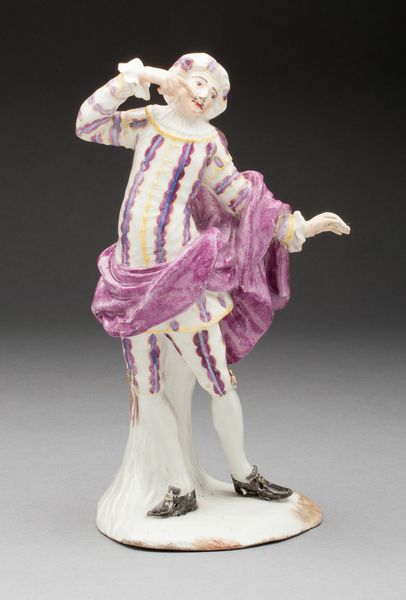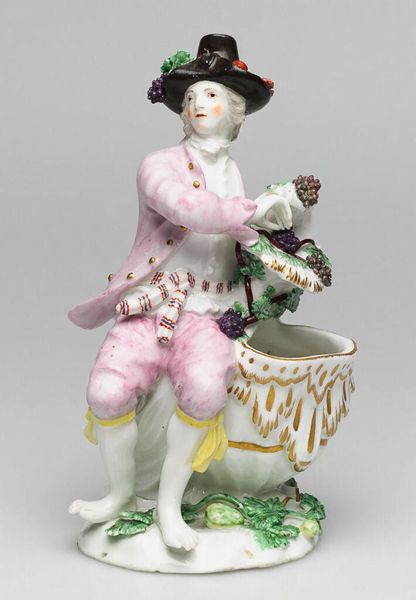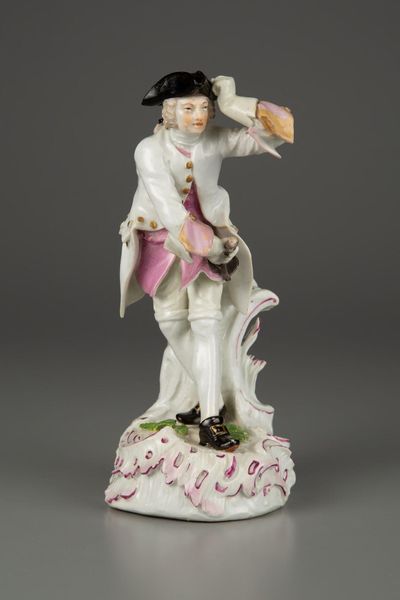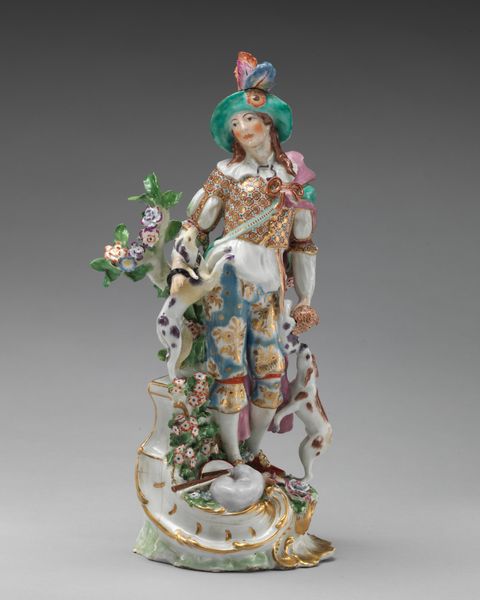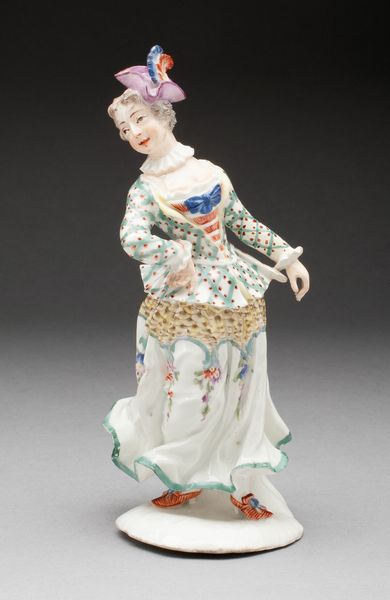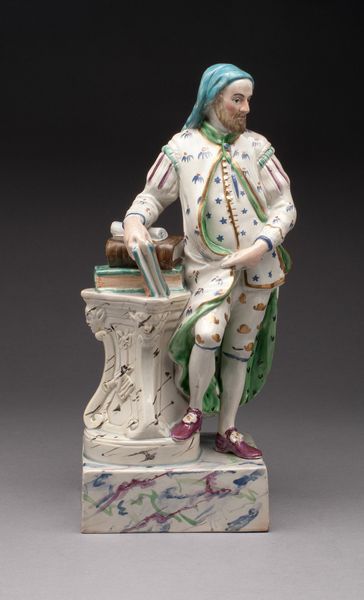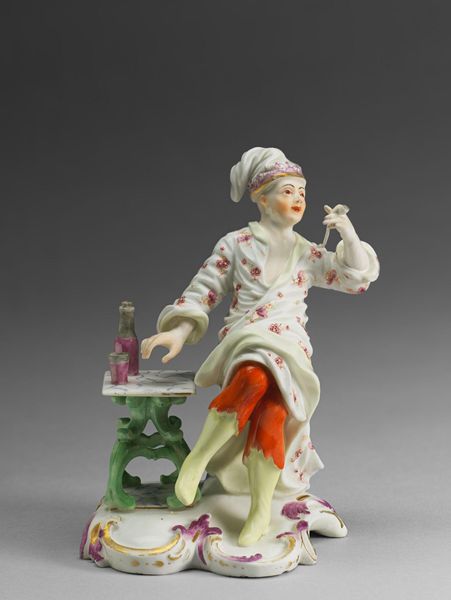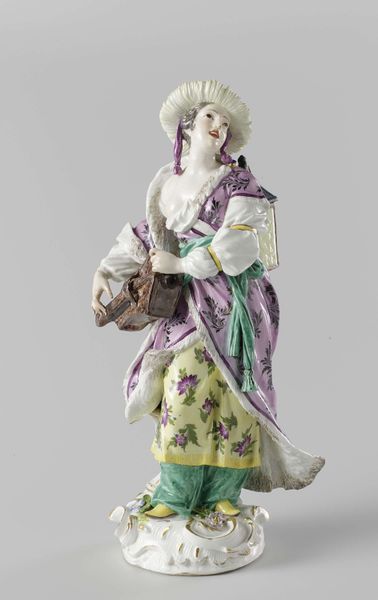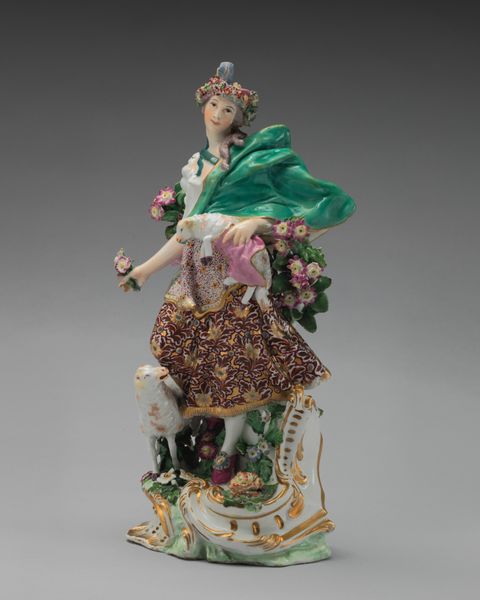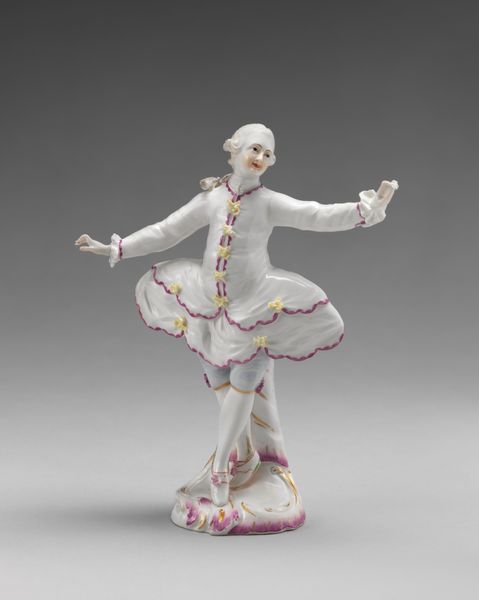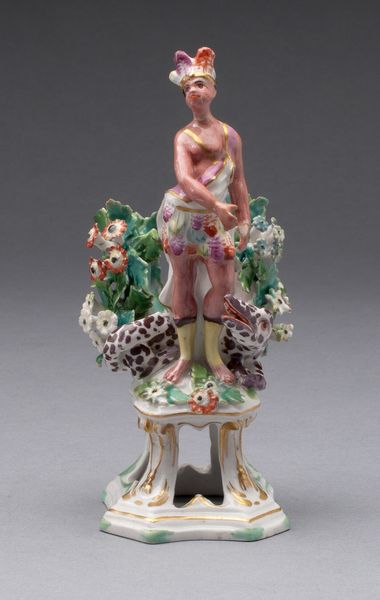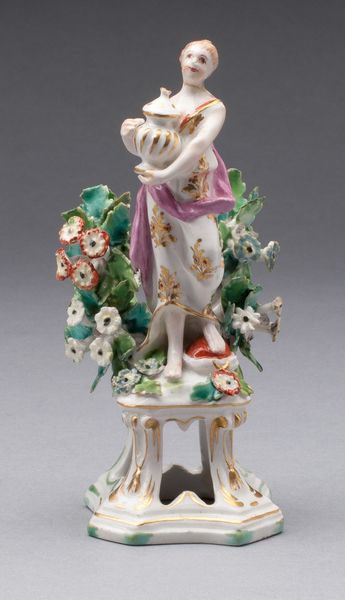
ceramic, porcelain, sculpture
#
ceramic
#
porcelain
#
figuration
#
sculpture
#
genre-painting
#
decorative-art
#
miniature
#
rococo
Dimensions: H. 24.1 cm (9 1/2 in.)
Copyright: Public Domain
Editor: So, this delicate porcelain sculpture, "Street Seller," created around 1765 by the Derby Porcelain Manufactory, is just lovely! It feels very...frivolous, in a way. The details are exquisite, especially the lamb and the little basket of fruit. How do you interpret this kind of object in its historical context? Curator: It’s fascinating to consider its role. This wasn’t merely decorative; it communicated social values and aspirations. The Rococo style, with its emphasis on ornamentation and playful themes, catered to the aristocracy. Who do you think was the likely owner of such piece, and what values would such object promote? Editor: Someone wealthy, for sure, probably trying to project an image of pastoral innocence, maybe? Despite, likely, benefiting from serious social inequalities. Curator: Exactly! These porcelain figures reflected and reinforced class structures. By showcasing idealized scenes of everyday life, they masked the harsh realities faced by ordinary people. Think about it: a street seller represented in delicate porcelain—it's a romanticized vision, divorced from the actual labor and economic hardship. It reinforces a sort of passive consumption on the part of the beholder, an elite consumer in its day. Editor: That makes a lot of sense. It’s almost like propaganda, reinforcing a particular worldview through art. Curator: Precisely. It shows us how art can be used to maintain social hierarchies and shape perceptions. The museum itself participates in these functions when placing the work for the public to consume. Editor: I’ll definitely think differently about decorative arts after this! I had underestimated its role in shaping society's views. Curator: It's always valuable to remember that what appears beautiful or harmless can have complex socio-political underpinnings.
Comments
No comments
Be the first to comment and join the conversation on the ultimate creative platform.
